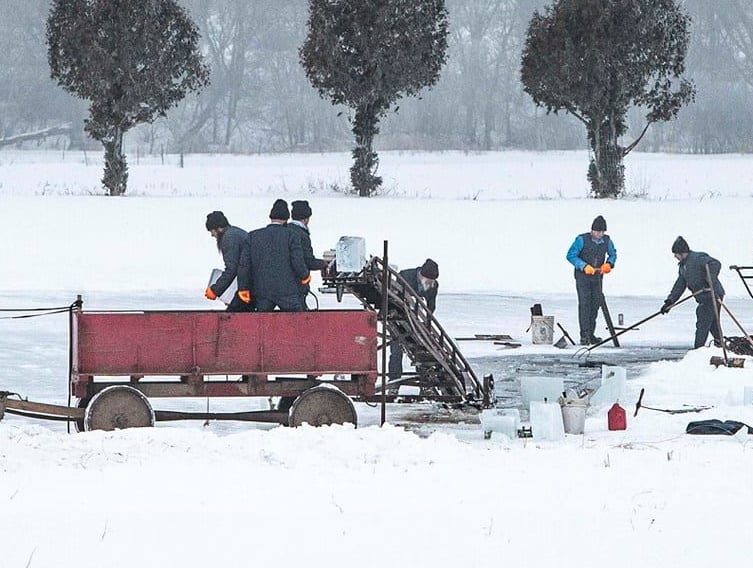Pennsylvania Dutch Kitchen Terms Quiz (Part 2)
Today, the second half of the Pennsylvania Dutch kitchen terms quiz we started on Tuesday. If you missed it you’ll find the first 12 words here, and answer key for the original 12 here. All words courtesy of Mark Curtis of the Belle Center, Ohio Amish community.
 Some of you used knowledge of German to figure the first batch out. Mary Miller noted that two terms of the original 12 are not used among Indiana Amish. I don’t speak the dialect, but I do know that words and manner of speaking can vary, for instance, between Amish in Lancaster County and the Midwest.
Some of you used knowledge of German to figure the first batch out. Mary Miller noted that two terms of the original 12 are not used among Indiana Amish. I don’t speak the dialect, but I do know that words and manner of speaking can vary, for instance, between Amish in Lancaster County and the Midwest.
For what it’s worth, I guessed three out of this batch correctly – #14, 17, and 23. You PA Dutch speakers out there ought to do a lot better than that 🙂 Again, these are all words that have something to do with the kitchen, food, or cooking.
13. tsonga
14. kessel
15. brote kuab
16. cha
17. millich
18. raum
19. mehl
20. ab butz lumba
21. safe
22. shonk
23. grundbearah schtomper
24. oiyah
25. nis
Image credit: katber/flickr






I probably wouldn't starve in an Amish kitchen --
— but I’d have to do a lot of pointing and asking “Wos is des?” in the first few weeks.
13. Tsonga, Zange, tongs
14. kessel, Kessel, kettle
15. brote kuab, Brotkorb, breadbasket
16. cha…
17. millich, Milch, milk
18. raum, Rahm, cream
19. mehl, Mehl, flour
20. ab butz lumba, Abputzlumpen, wiping-up rag — dishcloth?
21. safe, Seife, soap
22. shonk — a bit far away from Schrank, cupboard…
23. grundbearah schtomper, Grundbeerenstampfer, potato masher
24. oiyah, Eier, eggs
25. nis…
Oh well.
PA dietsch
cha = dishes
ab butz lumpa = dish towel
shonk = cupboard
nis = nuts
Cool!
“grundbearah schtomper” – that one I could reason out as “ground berry stomper” – potato masher! Then “mehl” as “meal” – flour, and “tsonga” tongs.
The others are beyond me! 😉
“Grundbearah schtomper” was my favorite of the entire list. Even though I am English and only know a tiny spattering of the dialect, it is just a funny sounding name 🙂
Enjoying good hearty food!
Whenever Im at an Amish Resturant I thougholy enjoy listening to the girls speaking Dutch German. It takes me back to my youth when I could set for hrs. and listen to my grandmother & her friends speaking it. Although I can still remember bits & pieces its always a pleasure to get one of the girls to translate what I don’t. Then I can teach them the same in Spanish. Its a wonderful time! 😉
I can relate
When I was a child I used to hear my mother’s family speaking Alsatian, a non-standard German dialect. As I grew older, and more & more of her elderly family members passed away I heard it less and less. Eventually there were none left that could speak it and I heard it no more.
Several years ago I was visiting the small (very small) Amish community near Beeville, Texas and was in their shop where they build buggies and wagons when three of four of them started speaking in their native tongue. From what I could hear, it reminded me of the Alsatian that I had heard as a child. So I asked the young man that I knew best in that community what language they were speaking and he said “Schwabisch, but we call it Swiss”.
I was not familiar with that name, but when I Googled it I learned that it is also referred to as Swabian. It is an Alemannic dialect, closely related to Alsatian. It is one of the so called “High German” dialects. You are correct, it takes you back. Wish I understood more of it, though.
Bavarian Dialekt
Hallo, Gretchen here from Australia! my mother also spoke the Alsation Dialekt from Hessen in Germany
The Schwaebische Dialekt is Bavarian. I can still speak, write and sing in Dialekt and Pfaelzich also.
Answer Key - PA Dutch Kitchen Terms 13-25
Here they are. Thanks again to Don and Mark!
13. tsonga – tongs
14. kessel – kettle
15. brote kuab or kwaab – bread basket
16. cha – pots and pans
17. millich – milk
18. raum – cream
19. mehl – flour (Mark said that corn meal would be welschkann mehl)
20. ab butz lumba – dish towel or tea towel
21. safe – soap
22. shonk – a cupboard, more like a big hutch
23. grundbeahra schtompa – potato masher
24. oiyah – eggs
25. nis – nuts
Dang!
Major face-palm! I would have gotten “cha” if it had been spelled Buffington-Barba-Beamishly, as “Gscharr”. (Standard German “das Geschirr”)
Once again, it’s time to link to one of my favorite poems in the dialect:
http://padutch.net/texts/wie-soll-mer-schpelle-how-should-you-spell/
Thank you to everyone who contributed to my PA Dutch kitchen vocabulary!
The pronunciation of PA German is closer to High German than it appears here, due to using English spelling equivalents.
For example the “ts” combination is “z” in German
The final “r” has been rendered “h” or silenced.
Lancaster County PG has retained a strong German “r”, although this is not always the equivalent of the English “r”.
The “r” in the beginning of a word or following a consonant can be pronounced as in English, or trilled as in Spanish. The “r” is trilled mostly among older people and Ontario Mennonites.
An example is the word for “basket”, it is Karb and pronounced exactly as the English word “Carp”, yes the fish!
Potatoes in PG are “Grundbiere” which means Ground Pears.